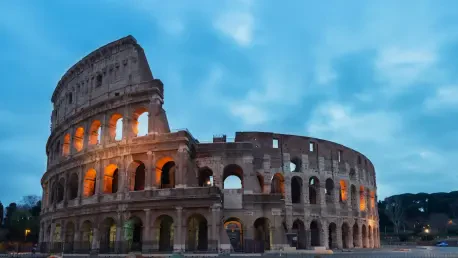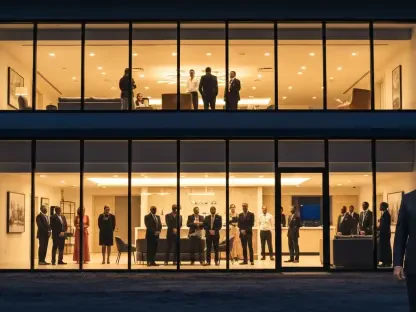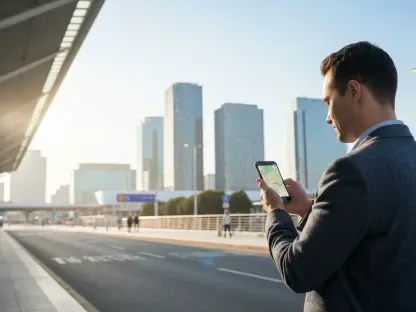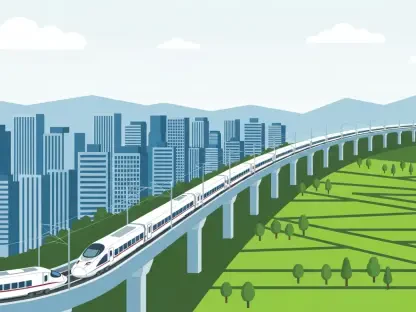Rome, the historic and spiritual heart of Catholicism, is once again at the center of global attention as it prepares to host yet another significant event—the Papal Conclave. This ceremonious gathering to elect a new Pope is anticipated to draw over a million visitors to the Eternal City. This massive influx presents Rome with formidable challenges, spanning from security arrangements to accommodating a surge of tourists. The conclave is not only a religious milestone but also a major logistical undertaking, requiring a well-oiled machine to ensure a seamless experience for pilgrims and tourists alike. To strike a balance between managing crowds, bolstering security, and capitalizing on economic opportunities, Rome has devised an intricate plan to handle the demands of this momentous occasion.
Security Preparations
Advanced Surveillance Measures
The upcoming conclave is prompting Rome to implement advanced security measures akin to those utilized during Pope Francis’s funeral. A comprehensive surveillance network will be established around St. Peter’s Square to monitor the area vigilantly. This includes the deployment of anti-drone systems, ensuring no unauthorized aerial interruptions. These measures are designed to be flexible, adapting to different stages of the event—from the conclave’s initiation to the enthronement of the new Pope. Security officials are committed to maintaining a watchful eye on all proceedings, aiming to ensure both the safety of attendees and the integrity of the event itself.
Security Personnel and Communication Challenges
In anticipation of approximately 250,000 attendees for the new Pope’s enthronement ceremony, the city plans to deploy around 4,000 law enforcement officers. These efforts are supplemented by an additional 1,000 Civil Protection operators, ready to manage the influx during the conclave’s initial days. However, one of the primary challenges lies in maintaining uninterrupted communication. Officials are working diligently to address the temporary blocking of telephone coverage inside St. Peter’s Basilica, which is crucial for the privacy and security of the Cardinals’ electoral process. This tactic could complicate external communication, but it remains a necessary step to safeguard the conclave’s sanctity and ensure the overall safety of those gathered outside.
Hospitality and Economic Impact
Accommodation and Tourism Surge
As more than a million tourists are expected to descend upon Rome from May 7 to May 14, the city is witnessing a 7 percent rise in visitors compared to the same period last year. This surge in numbers is causing an unprecedented demand for accommodations in and around the historic center of Rome, particularly in areas near St. Peter’s. Hotels, guesthouses, bed and breakfasts, and vacation homes are reporting occupancy rates soaring to 70-75 percent. Restaurant bookings are also reaching near-total capacity, especially in areas of profound religious importance like San Pietro, Santa Maria Maggiore, and San Giovanni. This spike in visitors is not only filling rooms but also adding to the unique vibrancy and palpable excitement characteristic of such significant religious milestones.
Economic Gains and Diverse Tourist Attractions
An increase in tourism invariably translates to economic benefits, and the hospitality and restaurant sectors are no exception. The restaurant industry alone foresees an additional 15 million euros in earnings exceeding forecasts for 2024, owing to a 3 percent rise in reservations compared to prior periods. However, the economic impact extends beyond traditional hotspots. Tourists are increasingly exploring alternative destinations such as the Pigneto neighborhood, demonstrating a growing appetite for diverse experiences. This trend not only diversifies the tourist map of Rome but also amplifies the economic ripple effects of the conclave across various parts of the city.
Coordinated Efforts and Future Considerations
Municipal and Organizational Coordination
The complexity of managing over a million visitors requires seamless coordination among various municipal and organizational bodies in Rome. Authorities have undertaken meticulous planning, from managing logistics and transportation to ensuring that essential services run smoothly. This collaboration is pivotal in maintaining order during the conclave, as well as offering a positive experience to both pilgrims and regular tourists. Such detailed planning underscores the critical balance needed between heightened security, efficient crowd management, and economic benefits generated by the conclave.
Balancing Security and Economic Opportunity
The upcoming conclave presents Rome with an opportunity to highlight its ability to tackle large-scale events adeptly. The city’s extensive preparations underscore the importance of blending strict security protocols with operational efficiency. By managing potential risks and seizing economic opportunities, Rome aims to set a benchmark for future religious and diplomatic congregations. This balance between security measures and hospitality enhancements also promises to fortify Rome’s status as a revered global destination, encouraging both spiritual pilgrimage and tourism in tandem.
Looking Ahead
The forthcoming conclave in Rome is encouraging the city to ramp up its security protocols, mirroring those used during the funeral of Pope Francis. A robust surveillance system will be put in place around St. Peter’s Square, enabling thorough monitoring of the vicinity. Key components of this security plan include the installation of anti-drone technology to prevent any unauthorized aerial disturbances and ensure seamless proceedings. These measures are deliberately designed to be adaptable, capable of adjusting to the various phases of the event, from the beginning of the conclave to the ceremonial enthronement of the new Pope. Security personnel are dedicated to keeping a close watch over all events, prioritizing the safety of both the participants and the public and upholding the sanctity of this significant occasion. Their ultimate goal is to secure the area and maintain order, ensuring that the events happen smoothly without compromising the solemn atmosphere of the conclave and its proceedings.









